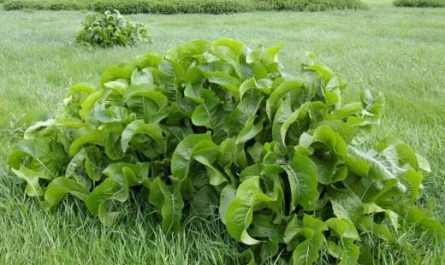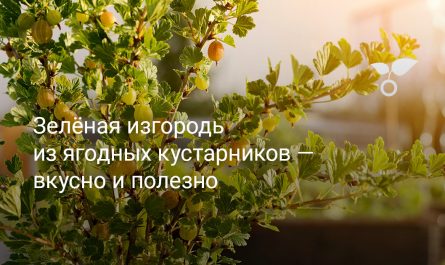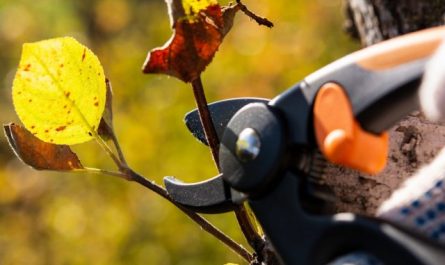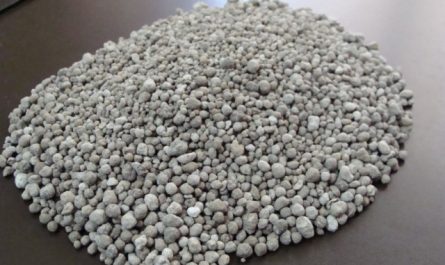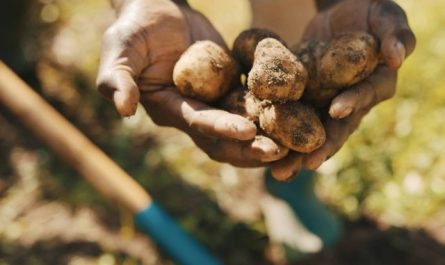Weeds are bad. They prevent cultivated plants from growing. Some wild herbs and shrubs are poisonous or can cause allergies. At the same time, many weeds can be extremely beneficial. They are used as medicinal herbs, as excellent mulch or a component of green manure, and as a means of repelling harmful insects and rodents. But in order to properly fight or use a particular plant for the benefit, it must be identified. In this article, we will tell you about 10 weeds that are often found in gardens and that are important to “know by sight”.

Not all of them are useful. But most of them are quite noticeable. However, despite the useful qualities of many weeds, few gardeners can calmly tolerate their presence on the plot. And here everything comes into play – hoes, flat cutters, herbicides, and manual weeding.
There are two opinions regarding herbicides: yes, of course, and no, never. When choosing this method, it would be good to think about what is worse – the weed or the poison that gets into the soil?
Recently, more and more supporters are attracted by natural farming – when the land is treated as a living being. Understanding the fertility of the soil in this case is not tons of mineral fertilizers and pesticides, but the use of gifts of nature for its own benefit.
A thick layer of mulch from mown grass will retain moisture in the soil, prevent plant roots from overheating and inhibit the growth of weeds, thereby freeing a person from exhausting work.
Sowing some green manure literally saves from weeds. Oats and rye, for example, are known aggressors, and weeds do not grow near them. Thoughtful and careful attitude to the land will return fertility to the soil and save you from unnecessary and tedious work.
1. Ambrosia
Ambrosia (Ambrosia) is one of the most malicious weeds known to mankind. The plant with lacy foliage in adult form often exceeds 1,5 meters in height. The root system is powerful – the taproot goes into the depth of 3-4 meters.

Ambrosia feels great in any soil and in any weather and climate conditions. Growing quickly, the weed thickets suppress everything that grows nearby. But this is not the worst trouble that this weed brings.
Ragweed blooming becomes a real disaster for people suffering from allergies. The plant’s pollen travels significant distances with the wind. Therefore, ragweed must be fought in the most uncompromising manner and its blooming must not be allowed under any circumstances. There is no benefit from it!
2. Pink sow thistle, or field thistle
Field dogfat (cirsium arvense) is a thorny herbaceous shrub. It can be easily recognized by its inflorescence – a bright pink or purple fluffy basket.

The pink sow thistle reproduces, like all other species of this plant – by seeds that fall into the soil, and with the help of rhizomes. Spreading in different directions, the roots of the weed give rise to shoots that easily capture more and more new areas. In fields where no one interferes with it, the sow thistle arranges real impassable thickets. But in vegetable gardens, of course, it is necessary to fight the sow thistle from the first days of its appearance, without waiting for the beginning of flowering.
Despite all its harmfulness, sow thistle has some positive qualities. In folk medicine, crushed leaves and stems are used to treat boils and wounds by applying the mixture to the affected area. Young, non-coarsened plants are used as cattle feed or compost.
3. Field bindweed
Probably every gardener has come across this cute looking plant. field bindweed (Convolvulus arvensis), also known as birch, appears immediately after the snow melts. A perennial creeping plant with a very long root – up to 3 meters or more. The shoots are thin, 1-1,5 m long, covered with small triangular leaves.

Bindweed blooms with large bells of white, pink or lilac color. It reproduces by seeds and root shoots. For support, the weed chooses the stems of cultivated plants and, growing, can greatly harm the plantings.
However, like many other weeds, bindweed has a number of positive qualities. In folk medicine, it is used as a medicinal plant. Decoctions and tinctures of bindweed are taken to treat bronchitis, various bleedings, bronchial asthma, liver diseases and other diseases. It has been noted that the juice of the plant prevents the occurrence of mold and fungi, so as a folk remedy, bindweed juice is used to treat ringworm.
In the garden, bindweed can also be used with benefit. Experienced gardeners say that in those beds where bindweed is found, plants are less likely to be affected by fungal diseases and rot. This plant also enriches green manure, compost and mulch.
4. Canadian fiddleleaf
Small canadian canadian (Erigeron canadensis) — a weed often found in vegetable gardens, has several popular names: “flea death”, “shut up the ass”, “rogue weed”, “coldweed”, “Canadian horseweed”.

A herbaceous annual with a main stem of varying heights – from 15 cm to 2 m. Numerous shoots extending from the conductor form a neat bush with small green leaves. Flowering occurs at the ends of the shoots. At the end of summer, small flower baskets form on them, in which the seeds ripen.
If you do not fight the small-petaled weed, it will easily spread across the site with the help of seeds. On fertile fertile soils, the weed turns into a powerful bush that suppresses cultivated plantings.
The small-petaled plant is widely used in folk medicine as alcohol tinctures or decoctions. These remedies are used as hemostatic agents for various types of bleeding, as well as anti-inflammatory agents for eye diseases, diarrhea, cystitis, and prostatitis.
5. Wormwood
Wormwood (Artemisia absinthium) — a perennial herbaceous plant of the Asteraceae family. You can recognize wormwood by its strongly dissected, glaucous leaves with a tart aroma.

At the beginning of growth, the plant forms a rosette of leaves, over time a ribbed stem appears, the leaves on which become smaller closer to the top and change color to green. The inflorescences are a loose panicle of small baskets.
Common wormwood is a rather useful plant. It becomes a weed only when it takes over someone else’s territory in the garden. Landscape designers use many types of wormwood when creating their masterpieces. Decoctions of leaves are used to combat pests, and bunches of dried wormwood are laid out in places where rodents visit. The sharp smell of wormwood scares away both for a long time.
Wormwood leaves contain all sorts of bitters, acids, tannins, resins, carotene and vitamins. Thanks to this set, the plant is used in folk medicine for a variety of diseases – digestive disorders, tuberculosis, articular rheumatism, depression, anemia, flatulence, liver and gallbladder diseases, hemorrhoids and many others.
6. Stinging nettle
Stinging Nettle (Urtica dioica), probably the most famous weed in our gardens and, without exaggeration, the most useful. This perennial herbaceous plant sometimes grows higher than 1,5 meters.

The leaves are opposite with serrated edges and covered with fine hairs of varying lengths, with short hairs being simple and long ones being stinging. Everyone knows how stinging nettles can cause – red blisters appear on the skin and the damaged area “burns” like a real burn.
Nettle grows well in damp, shady areas and is a real nuisance to gardeners. It often grows from the center of a cultivated plant and is difficult to remove – it is impossible to pull it out by the roots, and a torn stem immediately grows back.
The beneficial properties of nettles more than compensate for their harm, and some summer residents specifically plant this weed on their plots. Green fertilizer (weed infusion) from nettles contains all the microelements necessary for plant growth. Mulch and compost with the addition of this plant acquire additional beneficial properties.
Nettle is widely used in folk medicine as a hemostatic agent. Nettle infusion improves blood clotting, increases hemoglobin and generally improves blood. Diuretic and choleretic effect, anti-inflammatory property – the list goes on and on.
A decoction of dried leaves is used in cosmetology to rinse hair with oily scalp and dandruff. And, probably, each of us, if not tried, then probably heard that nettle leaves scalded with boiling water are added to spring salads and soups as the best vitamin remedy. So this is a big question – is nettle a weed?
7. Dodder, or Boa’s grass
Dodder (Сuscuta), without exaggeration, is the number one enemy of all plantings. This weed is capable of killing not only flowers and vegetables, but also shrubs – raspberries, lilacs, currants and others.

There are different types of dodder, but they are all quarantine weeds that need to be eradicated. Although eradicated is a purely conditional term, because it moves along the surface of the soil.
Dodder looks like a thin, smooth cord, devoid of leaves. Depending on the species, its shoots can be thin or strong, yellow or reddish in color.
The weed twines around the plant, attaching itself to it with suckers, and draws juice from both the leaves and the shoots. It is very difficult to fight dodder, because if you drop even a piece of the stem 1,5-2 cm long, a new plant will develop from it. If you do not notice dodder on the site in time, you can lose not only vegetables, but also shrubs.
Therefore, it is important to regularly inspect your property and remove the enemy as soon as it appears. The weed should not be given to livestock – this can cause poisoning. Collected dodder is burned on the spot, if possible, so as not to spread it around the site. Dodder reproduces best in warm, damp weather. In a dry period, dodder can burn itself if it grows in an open place.
Dodder is that rare weed that has no positive properties.
8. Swan and Mar
Quinoa (atriplex) and pigweed (chenopodium) – are not the same plant. They are close relatives, so similar that even specialists have difficulty distinguishing them. They are similar not only in appearance – the biological characteristics of these plants are also not very different, so it is customary to consider them all as quinoa.

Numerous species of quinoa can be both annual and perennial plants. On fertile, loose soils, quinoa can turn into a real giant; on poor soils, it grows poorly and looks like an inconspicuous grass. It even tolerates saline areas.
The glaucous triangular leaves of the orach, as if sprinkled with flour, are arranged alternately on a juicy stem. Flower panicles appear from the leaf axils along the entire length of the shoot. There are three types of orach seeds: some germinate immediately upon falling to the ground, others will sprout the following year, and others can lie in the ground for 10 years and only then appear. Nature has taken care here so that we do not suddenly find ourselves without such a valuable product. And it is, indeed, valuable.
Green mass of quinoa, added to compost or to weed infusion, will enrich organic matter with nitrogen. In addition, quinoa is edible, and many use it to prepare vitamin salads. In hungry years, quinoa was added to dough for baking bread, and this plant often became a real salvation from hunger.
In folk medicine, a decoction of quinoa is used to treat inflammatory processes in the throat, coughs, and as a sedative for various neuroses. The seeds remove toxins and are often used as a laxative and emetic for poisoning.
9. Couch grass
couch (Elytrigia repens) is one of the most famous and difficult to remove weeds. This perennial plant, 40 cm high, can form impassable thickets more than a meter high on fertile, moist soils.

The leaves are long, smooth, bright green. The inflorescence is a complex spike. It reproduces very actively both by seeds and by a creeping rhizome. Moreover, if this rhizome is slightly damaged, the plant will respond with the appearance of a bunch of new shoots.
Couch grass, although considered a malicious weed, has also found its place in folk medicine. The leaves of the plant contain ascorbic acid, carotene and alanine, and the rhizomes are rich in malic and ascorbic acid, fructose and many other useful microelements.
Decoctions and tinctures from the rhizomes have enveloping, diuretic, expectorant, laxative and diaphoretic properties. Most often, couch grass is used to purify the blood and remove toxins from the body. Juice from fresh leaves is used to treat colds and skin rashes.
10. Colostrum
Species milkweed (Euthorbia) quite a lot, and they all look different. What unites them is the milky juice that appears at the break of the stem. When it gets on the skin, the milk can cause irritation, as it contains toxic substances. For the same reason, milkweed should not be fed to animals.

All types of milkweed are thorny and have a powerful root system with a taproot. Growing, the weed deprives cultivated plants of moisture and nutrients. Milkweed prefers rich fertile soil, so its appearance on the site, although undesirable, still serves as a certain sign of soil fertility.



